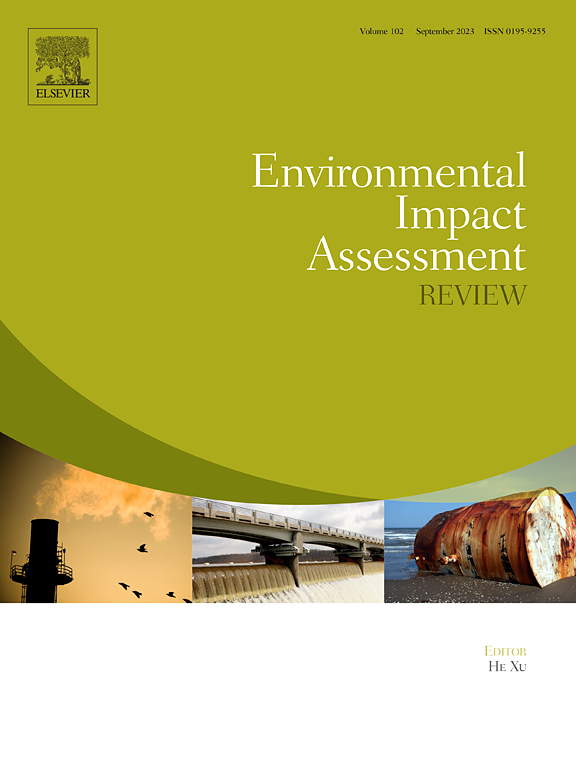Grazing or confining — Decoding Beef's environmental footprint
IF 9.8
1区 社会学
Q1 ENVIRONMENTAL STUDIES
引用次数: 0
Abstract
Greenhouse gas (GHG) emissions of beef production are extremely variable depending on the livestock production system (LPS) used, with lack of clarity on the influencing factors. Here, we assess those factors using a mass balance model with regional case study data for Portugal. We show that the whole-system GHG emissions range for beef production from steers in beef herds is 15–124 kg CO2e per 100 g protein depending on LPS (confined, pasture-based or mixed), breed, age at slaughter, and adequacy and upstream impact of supplemental feed. If steers are adequately supplemented, then LPS that involve at least a stage of grazing for steers have the lowest emissions, regardless of supplemental feed impact. In case of suboptimal supplementation during grazing, confinement is optimal at intermediate to low feed impact. For high feed impact, slaughtering at weaning is optimal. Choosing the best LPS and slaughtering age reduces the range of emissions to 15–35 kg CO2e per 100 g protein.

求助全文
约1分钟内获得全文
求助全文
来源期刊

Environmental Impact Assessment Review
ENVIRONMENTAL STUDIES-
CiteScore
12.60
自引率
10.10%
发文量
200
审稿时长
33 days
期刊介绍:
Environmental Impact Assessment Review is an interdisciplinary journal that serves a global audience of practitioners, policymakers, and academics involved in assessing the environmental impact of policies, projects, processes, and products. The journal focuses on innovative theory and practice in environmental impact assessment (EIA). Papers are expected to present innovative ideas, be topical, and coherent. The journal emphasizes concepts, methods, techniques, approaches, and systems related to EIA theory and practice.
 求助内容:
求助内容: 应助结果提醒方式:
应助结果提醒方式:


